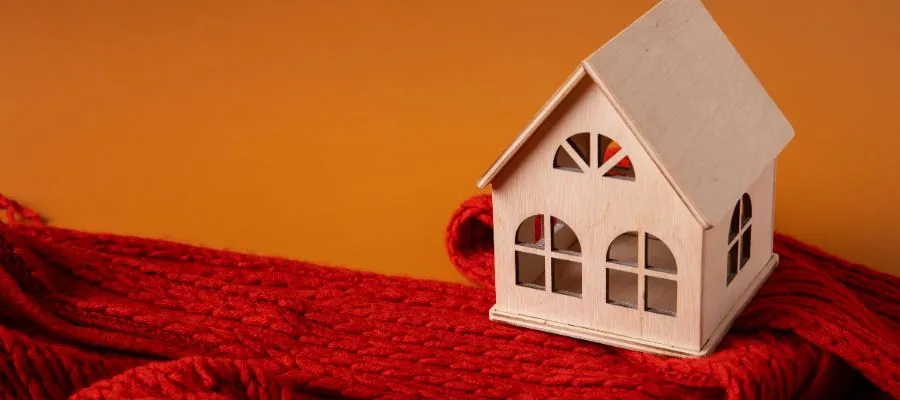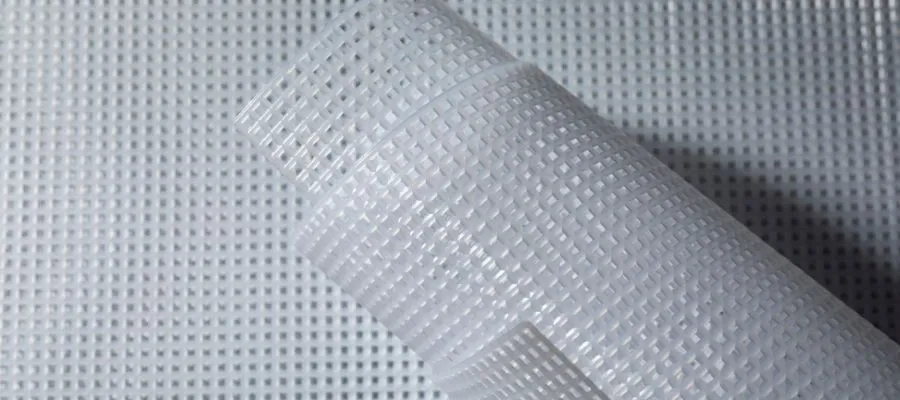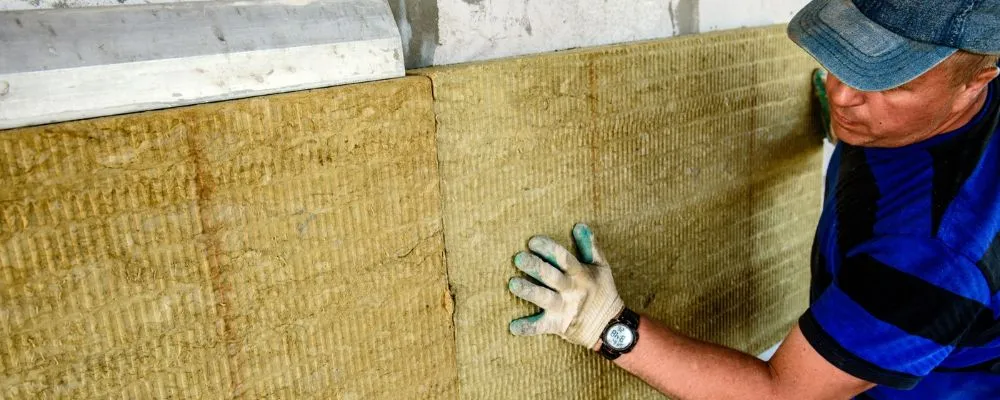Building insulation is the most important thing when it comes to construction, where comfort and efficiency meet. The right insulation can make a big difference in comfort and energy bills, whether it keeps heat inside in the winter or cools in the summer. In this blog, Brick & Bolt will go into great detail about building insulation, covering various types and materials to suit different tastes and needs.
What is Building Insulation?
Building insulation refers to materials used to create a barrier between the interior and exterior to maintain a temperature, reduce energy consumption, and dampen noise. It is an important part of building design that makes buildings more comfortable, saves energy, and lasts longer.
Insulation stops heat from moving from one part of a building to another, keeping the inside at the right temperature no matter the weather. In cold climates, insulation helps buildings keep their heat inside. It keeps the inside cool in hot climates by stopping heat from getting through the building shell.
R-value, which stands for “radiative resistance,” is a way to measure how well building insulation works. Insulation that is better at controlling temperature changes has a higher R-value. This means that it fights heat flow better.
Building insulation comes in many forms, such as batts, rolls, loose-fill, spray foam, stiff boards, and reflective barriers. Each type of insulation has its own set of benefits and can be used in various situations, depending on temperature, building design, budget, and environmental concerns.
Types of Building Insulation

There are different kinds of insulation for buildings, and each works with different types of buildings and situations. These are some popular types of insulation for buildings:
Blanket Insulation:
This kind of insulation is made of flexible threads, like mineral wool or fibreglass. It comes in packs or rolls that are already cut, and it’s often used on floors, walls, and attics that aren’t finished yet. Blanket insulation works well to keep heat and noise out and is easy to implement.
Rigid Foam Insulation:
Rigid foam insulation boards can be made from extruded polystyrene (XPS), expanded polystyrene (EPS), and polyisocyanurate (polyiso). These boards are often used to insulate roofs, cover the outside of walls, and wrap insulated concrete forms (ICFs). They don’t absorb heat or water and are very resistant to both.
Spray Foam Insulation:
This kind of insulation is sprayed on as a liquid that hardens and expands, making a continuous layer of insulation. Spray foam insulation comes in two main types: open-cell and closed-cell. Spray foam with open cells is lighter and lets more air through, while spray foam with closed cells is better at keeping heat and water out.
Loose Fill Insulation:
This type of insulation comprises small pieces, usually cellulose, fibreglass, or mineral wool. Specialised tools are used to blow it into closed areas like attics, walls, and crawl spaces. Loose-fill insulation does a great job of covering and insulating.
Reflective Insulation:
Insulation that reflects light is made of reflective materials, such as metal foil or plastic films. It stops heat from moving by reflecting solar heat. Reflective insulation is often used with other types of insulation, especially in places with high direct heat loads.
Types of Insulation Materials

Here are some of the most popular types of building insulation:
Fibreglass:
Fiberglass insulation is one of the most common types. It comes in different types, such as batts, blankets, and loose-fill. Fiberglass insulation is known for its ability to keep heat and noise out.
Mineral Wool:
Mineral wool is made from natural rock or made-up slag. It is also called rock wool or slag wool. It comes in batts, blankets, and loose-fill shapes. Mineral wool doesn’t catch fire, keeps hot and cold air and noise out, and doesn’t absorb water.
Expanded Polystyrene (EPS):
EPS is a light, hard foam insulation material made from polystyrene beads. It is often used for insulated concrete forms (ICFs), covering the outside of walls and the roof. EPS is a good insulator against heat loss and water damage.
Extruded Polystyrene (XPS):
(XPS) is a closed-cell rigid foam insulation material that doesn’t absorb water well and keeps heat in. It is often used for roofing, base insulation, and exterior insulation.
Polyisocyanurate (polyiso):
Polyiso is a rigid foam that is very good at keeping heat in. It is often used to insulate walls and roofs. It is famous for being a great insulator and being resistant to fire and water.
How to Choose the Best Type of Insulation?
Building insulation doesn’t come in a single “best” type that works for everything. The best type of insulation relies on several things, such as:
1. Climate:
Insulation needs to be chosen depending on the climate. For example, in cold climates, it’s important to have insulation with a high R-value (thermal resistance) to keep heat in. On the other hand, in hot climates, it may be more important to have insulation that keeps heat and wetness out.
2. Building Type and Application:
A house needs different kinds of protection than a company or industrial space. The type of insulation that works best for a building relies on its size, shape, and purpose.
3. Energy Efficiency Goals:
If the main goal is to save energy and cut down on heating and cooling costs, spray foam or stiff foam boards may be the best insulation materials with the highest R-value per inch.
4. Moisture Control:
In places with high humidity or a chance of condensation, closed-cell spray foam or extruded polystyrene (XPS), which don’t absorb water, maybe better insulation choices.
5. Fire Resistance:
Mineral wool or cellulose insulation, which is very good at resisting fire, may be a better choice for buildings with strict fire safety rules.
6. Environmental Concerns:
People who want to choose eco-friendly choices may choose insulation made from recycled materials like cellulose or mineral wool over products made from petroleum, such as polystyrene foams.
7. Cost and Installation:
You should also consider the different types of insulation, their installation methods, and the upkeep they require over time.
Ultimately, the best type of insulation should be chosen after carefully considering the project’s needs, the environment, and the building itself, as well as the pros and cons of each insulation material.
To sum up, choosing the right insulation material and method is very important for ensuring that the building is comfy, saves energy, and lasts a long time. There is no one-size-fits-all answer, but considering climate, building type, energy-saving goals, moisture control, fire resistance, environmental concerns, and cost will help you make a smart choice.
It is just as important to install the insulation correctly as it is to choose the right insulation. If you talk to professionals and follow the manufacturer’s instructions, you can ensure that your insulation works well and gives you the benefits you want in the long run.
By learning about your options and choosing the best insulation solution for your needs, you can make your home or place of business more comfortable, energy-efficient, and long-lasting for years to come.
For a better understanding, visit our recent blog about Nanotechnology in Concrete: Improving Strength and Durability at the Molecular Level.

